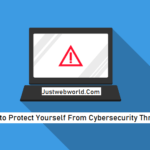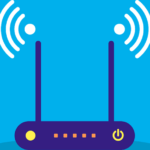Everyone’s worried about how to protect themselves from COVID-19, but did you know the virus is threatening your home network and devices, too? Yes, as if the threat of getting seriously ill or worse weren’t bad enough, this crisis is coming for our devices.
Scammers are taking advantage of escalating fear of the virus, and the sharp uptick in remote work by companies seeking to mitigate the spread of the disease, by developing new phishing techniques that could threaten your personal information and financial security.

In fact, Computer Weekly reports that, collectively, the proliferation of COVID-19-related phishing emails, malware, and other threats makes the pandemic the largest security threat ever, as social engineering attacks are deployed on a massive scale.
The COVID-19 Cybersecurity Threats Keep Coming
As the entire world hunkers down and tries to wait out the worst pandemic of the last 100 years, cyber criminals, hackers, and scammers are having a field day.

The global economy may be set for a major contraction due to COVID-19, but cyber crime is looking for a payday. So many malware and phishing threats have emerged as a result of the pandemic that it’s impossible to list them all.
In the week prior to April 17, 2020, Google blocked a staggering 18 million COVID-19-related phishing and malware emails a day. For some context, the enormous tech company blocks about 100 million phishing emails on an average day.
The majority of phishing and malware emails related to the novel coronavirus play on users’ medical and financial fears regarding the unfolding realities of the pandemic.
A significant number purport to come from members of the World Health Organization, offering medical safety and hygiene advice — one such common attack includes a malicious Word attachment that downloads malware onto the user’s device.
Another prevalent malware email claims to offer users access to an interactive map tracking COVID-19 cases and deaths in real time. The map is fake, and so is the software that the email urges users to download to create said fake map — it’s malware. But the map and the message look so sophisticated that many users are taken in.
That’s not uncommon. Phishing attacks in general are getting more sophisticated, and COVID-19-related attacks are no exception to that rule. Many of these attacks are so incredibly sophisticated that users don’t give them a second thought.
And at least some of the attacks are state-sponsored efforts to target international health care workers, U.S. government employees, and public health agencies, among others. With droves of employees suddenly working from home with little in the way of IT support, the risks are even greater.
Don’t Fall Victim to COVID-19 Cyber Attacks
There may not be a vaccine for COVID-19 yet, but protecting yourself from related cyber threats is fortunately somewhat easier. Start by making sure you have a secure network, especially if you’re working from home. With malware and phishing threats ramping up, you need to beef up your home network security, too.
The right solution will offer the IT support you need (and which your company, let’s face it, probably isn’t equipped to give you at this juncture), combined with security for all your smart devices and total control over your network — who and what connects to it, event timelines, real-time threat notifications, and more.
Comprehensive home network security can’t take the place of vigilance and good old-fashioned common sense, though.
Now more than ever, you need to be skeptical of any emails you get, especially any that offer medical or hygiene information, safety tips, cures or treatments for COVID-19 (there are none, and if any emerge, you won’t find out about them from a stranger’s poorly written email), interactive maps, or even meal deals from local restaurants.
Don’t follow any links in emails you receive or download any attachments you weren’t expecting, and avoid discussing sensitive information in email if at all possible.
As the COVID-19 crisis deepens, it’s become clear that it’s not just a global threat to public health. It’s also ushered in an historic wave of social engineering attacks, phishing scams, and malware.
Take the right steps to protect yourself from COVID-19, and stay vigilant against coronavirus cyber attacks, too. The safety of your network and devices, and your very financial future, could depend on it.
You might like.
- The (Security) Problem With Email.
- How to Protect Yourself From Cybersecurity Threats.
- Startup Security Essentials.
Join 25,000+ smart readers—don’t miss out!






